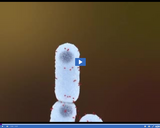
An antigen is a substance on the surface of a cell that identifies the cell as a pathogen
- Subject:
- Science
- Provider:
- Utah Education Network
- Provider Set:
- Animations and Images 2011 Collection
- Author:
- Visual Learning Company
- Date Added:
- 08/18/2011

An antigen is a substance on the surface of a cell that identifies the cell as a pathogen
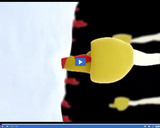
The main function of B cells is to recognize specific antigens and produce specific antibodies.

Pathogens can cause infected cells to produce a protein called "interferon." This substance causes nearby uninfected cells to produce enzymes that block the reproduction of pathogens.
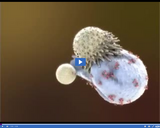
Cytotoxic T cells, also called "killer T cells," attack dangerous cells by producing a protein that bursts the cell membrane.

Lymph is transported through lymph vessels. Special structures called "lymph nodes" filter lymph and store white blood cells. When the body is fighting an infection, white blood cells are produced in great numbers.
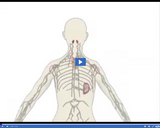
Important structures in the lymphatic system include the tonsils, thymus gland, and the spleen. The spleen is very important because it removes worn-out red blood cells, platelets, bacteria, and other things from the blood.
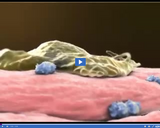
Phagocytes are leukocytes that engulf unwanted cells and pathogens in a nonspecific manner.
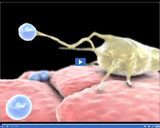
Macrophages are the largest leukocytes, and lymphocytes are leukocytes involved in specific defense activities.
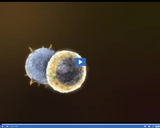
T cells are lymphocytes that seek and destroy pathogens. There are several types of T cells.
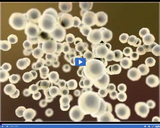
When the body is fighting an infection, white blood cells are produced in great numbers.

Wondering what a career in the healthcare industry would be like? Curious about how you can prepare now? This video emphasizes the importance of Biology as a foundation for a career in healthcare, and takes students on a tour of various jobs and careers in the medical industry.

The law of superposition states that in layers of sedimentary rock, younger layers are found at the top and older rocks are found at the bottom.

Toward the end of the precambrian era, simple animal ocean life appeared in the form on jelly fish, worms, sponges, and coral.

The theory of continental drift states that the present-day continents were joined together in a supercontinent called Pangaea. Over time, the continents drifted away from each other to their present-day positions.
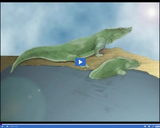
Early amphibians, walked on land during the paleozoic era, approximately 360 million years ago.
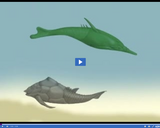
Fish, the first animals with backbones, proliferated during the paleozoic era.
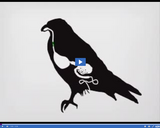
When birds eat, food passes from the mouth to an enlarged part of the esophagus called the crop. Here food is stored and softened, then passes to the gizzard, then travels to the intestine where nutrients are absorbed.
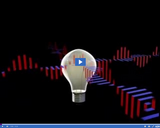
Light energy travels as an electromagnetic wave, and as a stream of moving particles called photons.

When light passes through a prism, the glass slows the light down. Different colors in white light have different wavelengths. Each wavelength is refracted a different amount, causing them to separate into different colors in the process of dispersion.

When light passes through a prism, the glass slows the light down. Different colors in white light have different wavelengths. Each wavelength is refracted a different amount, causing them to separate into different colors in the process of dispersion.